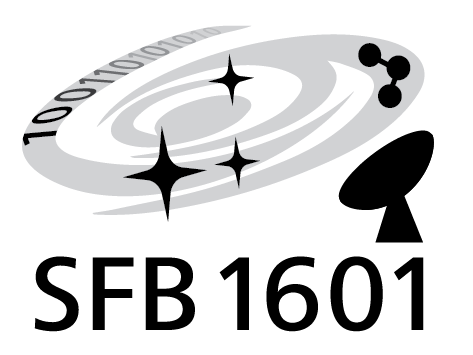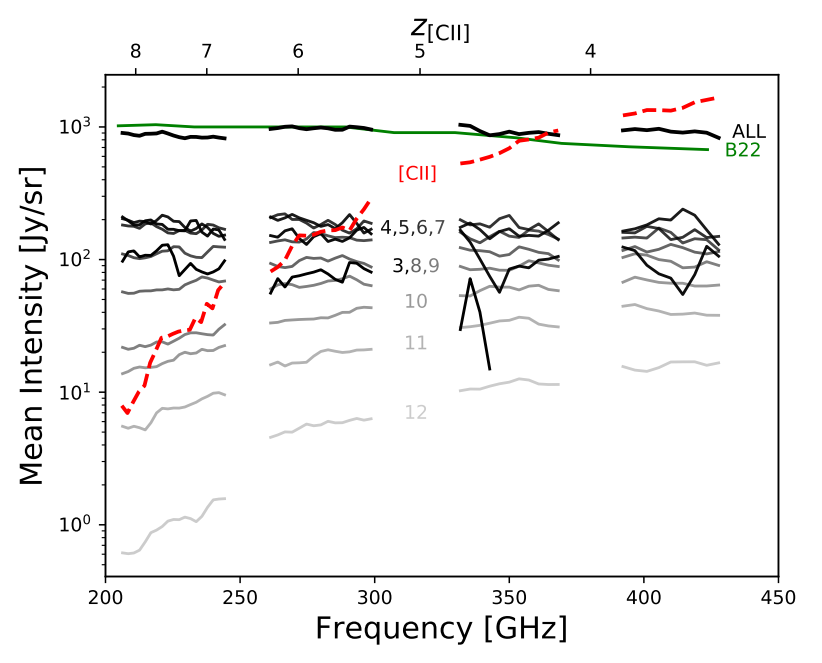In our recent Astronomy & Astrophysics paper, we explore the prospects of using [CII] line intensity mapping (LIM) observational technique with the upcoming FYST / Prime-Cam instrument to study galaxies that formed about 0.5–1.5 billion years after the Big Bang. LIM measures the cumulative emission from many faint galaxies without resolving them individually, offering a powerful way to trace the contribution of sources too faint to be detected even with state-of-the-art telescopes. The [CII] 158 µm line is a key tracer of star formation in these early systems, but its signal is strongly contaminated by foreground CO emission from later galaxies along the line of sight.
To address this challenge, we generate mock [CII] and CO maps by post-processing the IllustrisTNG300 simulation and test a masking strategy in which bright CO emitters are identified from an external galaxy survey catalog and removed. Our results show that, without masking, CO dominates the signal at almost all observing frequencies, with the exception of the higher end of the frequency range of our telescope. After masking, the [CII] signal becomes accessible across most frequencies. At the highest frequencies, however, which probe the earliest and most distant galaxies, the CO contamination remains severe. In this regime, masking alone is not sufficient, highlighting the need for complementary techniques such as line-deconfusion or cross-correlations with other tracers.
This study demonstrates that, with the support of ancillary galaxy surveys, the [CII] LIM signal from early galaxies can be detected, a first step toward applying LIM to trace star formation within the first generations of galaxies.

